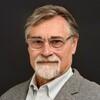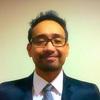Explore all the information on
Poultry biosecurity
Biosecurity is a key management tool and an essential part of any successful poultry production system: it can be defined as the planning and implementation of a set of measures to protect domestic poultry flocks against the introduction of unwanted organisms. Because of the concentration in size and location of poultry flocks in current commercial production operations and the inherent disease risks associated with this type of production, it is imperative that poultry producers practice daily biosecurity measures. Developing and practicing daily biosecurity procedures as best management practices on poultry farms will reduce the possibility of introducing infectious diseases such as Avian Influenza and Exotic Newcastle as well as many others. Contract poultry growers should be familiar with the specifics of their company’s biosecurity protocols and work closely with company representatives to implement those programs.
INTRODUCTION Disease control, high production, product quality, and reasonable production costs have been the recent main goals of the poultry industry. Hence, meeting per capita consumption and welfare to humans necessitates continuous efficient and goal-oriented healthcare to control disease spread and decrease the application of antibiotics (1). These endeavors will include the launch of programs to control infectious diseases, face the constant changes in political and...
Comments : 0
Recommendations: 2
Jean-Pierre Vaillancourt (University of Montreal) talked about biosecurity and the risk factors associated with infectious diseases, during the Latin American Poultry Congress in Lima, Peru....
Comments : 2
Recommendations: 13
The demand for poultry products continues to rise and, since the beginning of the COVID-19 pandemic, so has the popularity of backyard poultry flocks. With the current mandates for social distancing and isolation, those who are spending a greater amount of time at home view it as an...
Comments : 0
Recommendations: 0
Introduction The Newcastle disease (ND) is the most economically important disease in poultry, due to the high rate of morbidity, mortality, slaughter, and associated sanitary measures in poultry farms, particularly in developing countries [1]. ND is caused by virulent strains of avian paramyxovirus type 1. This virus is highly contagious in all the age groups and can infect many species of domestic and wild birds [2]. The major clinical signs of ND are depression, weakness,...
Comments : 0
Recommendations: 0
In general, composting poultry can be described as an all-natural, environmentally friendly method of mortality management, which minimizes water and air pollution by retaining nutrients, pathogens, and odors. Given the right conditions, microorganisms break down organic material (poultry mortalities, in this case) and carbon into a useful and valuable finished product. Composting also can enhance disease prevention efforts and biosecurity practices by operating in an...
Comments : 9
Recommendations: 3
During this PSA interview, Abbey Mathew (Aviagen New Zealand) explains how this country dealt with the effects of the pandemic regarding safety and supply chain. Let's Squawk About It is a monthly interview segment by the Poultry Science Association....
Comments : 0
Recommendations: 0
Water is the most important nutrient for poultry; survival time is limited in its absence. Birds can survive for longer periods without any other nutrient than they can survive without water. Although water is regarded as the most essential nutrient, it is impossible to state its exact requirements. Birds generally drink approximately twice as much water as the amount of feed consumed on a weight basis. During periods of extreme...
Comments : 5
Recommendations: 2


Veterinary APIs Market Update: Price Trends & Key Insights – February 2025
Suggested link
Biosecurity is a major consideration for egg farmers across the world, and can be regarded as the ecosystem of measures capable of preventing the spread of harmful organisms to animals to reduce the risk of transmission of infectious diseases. Strong biosecurity requires all preventative measures to work collaboratively, from vaccines to physical barriers, hygiene practices, personal protective equipment (PPE) and bio-monitoring. It is essential that all elements are working in sync, with no...
Comments : 0
Recommendations: 0
by Sam Shafer
Preventing disease transmission between flocks is a major goal of the poultry industry. One threat to bird health is the protozoan Histomonas meleagridis, which causes a disease called histomoniasis. In commercial turkey flocks, histomoniasis has a mortality rate of 80 to 100 percent. To stop outbreaks, scientists and poultry producers need a better understanding of how the disease spreads.
Now a new study, published in the June issue of the...
Comments : 0
Recommendations: 0
Ermin Magtagnob, Regional Technical Services Specialist at Novus International, speaks about key success factors - route of transmission and preventive measures, facility hygiene, team approach to maintaining biosecurity - and best practices we can adopt to support the animal nutrition industry....
Comments : 2
Recommendations: 1
Vetworks will provide a fully adapted streaming service for the Welfare Training from the 15th till the 17th of December.
This training will allow you to learn in an interactive and practical way while having all the information without leaving the comfort and safety of your home.
During these 3 days of online streaming, flexible moments are foreseen to follow pre-recorded topics to allow you flexibility.
Scope of the seminar: ...
Comments : 0
Recommendations: 0
1. Introduction Transportation coops have been shown to be a vector for cross-contamination during the 3–12 h transportation and holding period that occurs before birds are processed [1]. These coops contain organic matter and microorganisms left by previously transported flocks [2]. Salmonella and Campylobacter levels can increase by 20 to 40% during loading, transportation, and holding before being processed [3–5]. Transportation is a known stress factor in poultry...
Comments : 0
Recommendations: 0
Occurrence IB has been reported as a disease only in chickens. All ages of chickens are susceptible to infection, however, clinical disease severity varies. IB is considered to be worldwide in distribution. The incidence is not constant throughout the year, being reported more often during the cooler months. History The disease was first described in 1931 in a flock of young chickens in the United States. Since that time, the disease has...
Comments : 0
Recommendations: 0


DL-methionine can replace methionine-hydroxy anlalog products in a ratio of 65:100 in laying hen fee
Suggested link
Martha Pulido-Landinez (Mississippi State University) gave recommendations on how to deal with this disease, including identification of sources, during IPPE 2020 in Atlanta, USA....
Comments : 4
Recommendations: 5
Tom Tabler (Mississippi State University) discussed the optimal conditions to execute composting properly and the advantages of using this option, during IPPE 2020 in Atlanta, USA....
Comments : 0
Recommendations: 0
A new educational program hosted by the American Feed Industry Association will focus on biosecurity as it pertains to foreign animal diseases, such as foot and mouth disease, African swine fever and avian influenza. The program, “Biosecurity in the Face of Foreign Animal Disease – What the Feed Industry Needs to Know,” will take place on Jan. 29, 2020, in conjunction with the 2020 International Production & Processing Expo, taking place Jan. 28-30 in Atlanta, Ga....
Comments : 0
Recommendations: 0
Husam Bakri, Global Technical Expert at Merck, explained his findings on avian influenza in the Middle East and North Africa, as well as economic impact, vaccination, and biosecurity, during IPPE 2017 in Atlanta, USA....
Comments : 29
Recommendations: 25
Udi Ashash (Director of Global Technical Services, Phibro Vaccines) explained the effect of migratory birds, and gave recommendations on eradication and vaccination, during the Avian Influenza International Seminar 2017 in Buenos Aires, Argentina....
Comments : 12
Recommendations: 6












.mp4&w=3840&q=75)
.jpg&w=3840&q=75)





















